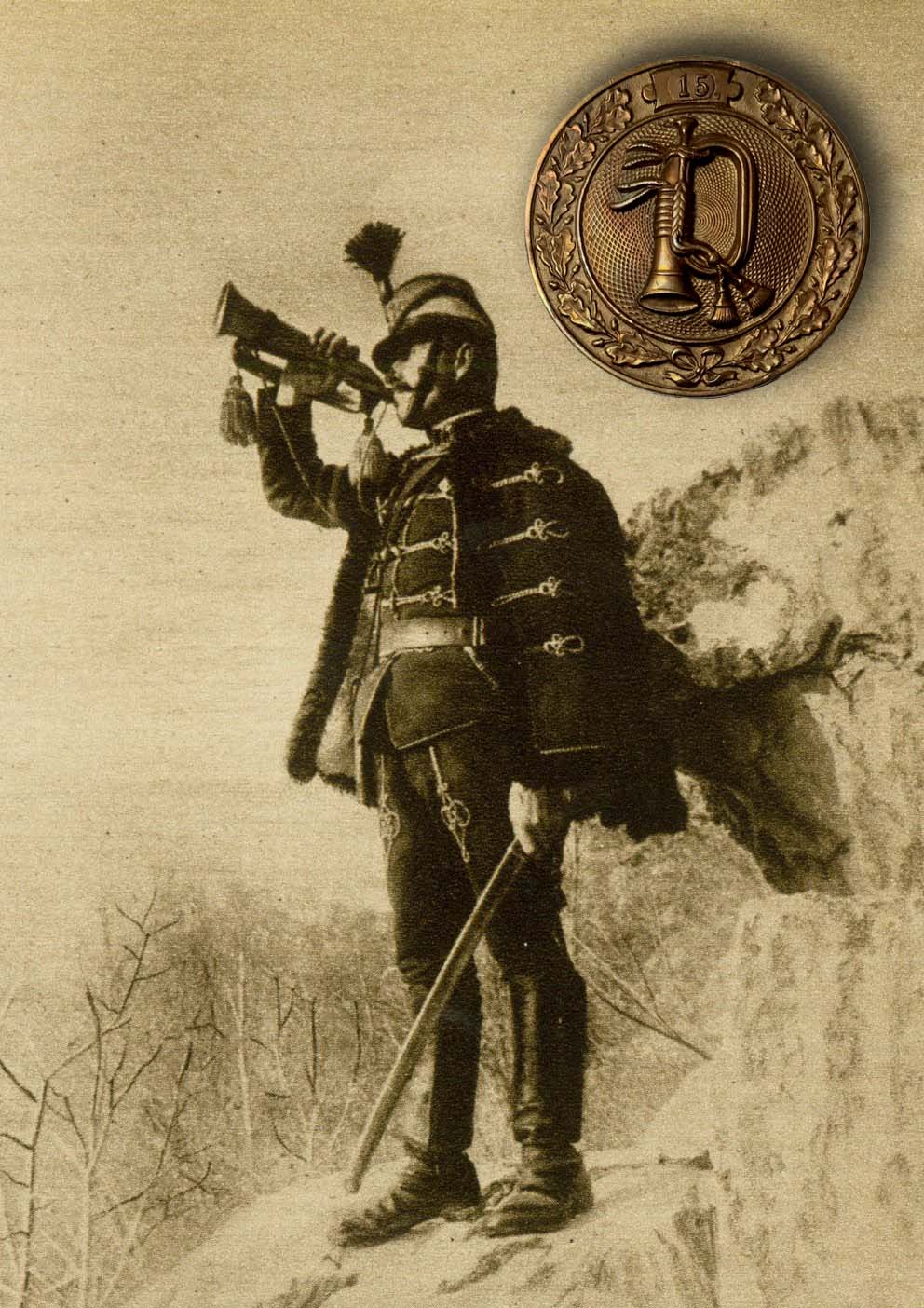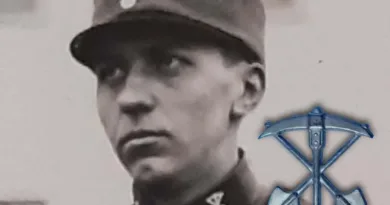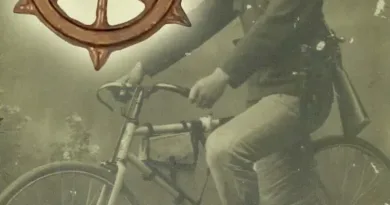Buglers’ badge
Another excellent post by Gábor Széplaki:
The rapid, accurate, and secure transmission of information has been an important task to be solved both in the past and in the present day. That was also a crucial factor in the armed force too. Prior to the proliferation of revolutionary high-tech solutions to ensure high-quality, long-distance and safe transmission of sound and image, several methods were developed and used by the warring parties. Think of smoke, light, flag markings or various instrumental signals (e.g. whistles, drums, trumpets, horns) to pass on the necessary information.
In the army of the Monarchy, it was the drummers and buglers who used their instruments to pass on the order to the soldiers of the subunits. They are not to be confused with military musicians who were members of military bands and played a completely different role within the military. The infantry’s command instrument was the drum, which was added by the horn in the second half of the 1800s. Since the sound of the trumpet could be heard from a distance beyond the drums, two buglers were employed alongside the two drummers of the infantry companies. In 1917 the drums were abolished throughout the army. The infantry’s horns and cavalry trumpeters also used A-tuned and F-tuned 1868M horns. The F horn was a 340 mm long instrument for infantry, artillery and all other formations. The length of the A-tuned horn was only 270 mm, which was used by the higher units for orders communication.

A 6 m long, 7 mm diameter woolen cord was wrapped around the horn, which ended in tassels. These could have hung at both ends of the instrument in the line of the whistle and funnel 80 mm in length. With the middle, freely looped part of the string on the instrument, the horn could be hung backwards or on the shoulders, which allowed both hands of the bugler to be freed. His chances of survival /self-defense during an action were many times more favorable than those of drummers, who were hampered in defense by hand-held drumsticks and instruments hooked across their breasts.
From 1896, the infantry buglers were mounted. The buglers of regiments were sergeants, the men at the battalions buck sergeants. The buglers and drummers of the companies were privates. The cavalry squadrons’ and artillery batteries’ buglers were corporals. They were distinguished by the red coloring of the horse hair ornament on their hats. After the buglers were mounted their subsequent horse training was very difficult, so from 1898 the rookie training of the buglers took place in the hussar squadrons. Here they received not only the training of horse riding and horseback using of their horns, but also other basic training (saddling, horse care, etc.) which is indispensable for the mounted soldier.

The regular practice of infantry buglers and drummers was led by the battalion bugler and battalion drummer at the station of the battalion. In the case of the cavalry, the squadron trumpeters also had to complete a five-month petty officer’s school in order to obtain their corporal status. From 1896, the conductor of the district military orchestra continued to train the military and class trumpeters.
Rare pieces of collections are the regiment buglers’ skill badges. Unfortunately, so far I have not been able to find the official instructions/regulations for wearing, designing or awarding. In the literature available, the 1909 introduction is mentioned for the Landwehr formations, but there is no data for other branches of the army.

The piece in the picture is thick, made of tombs or red casting. The 460 mm diameter badge is round in shape. On the outer edge, a smooth section with thin margins protruding at a thickness of 80 mm is contended, with oak branches tied together with a tape tied to a rim at the bottom running around two sideways. On top a convex board shows a number 15 protruding from the plane of the board and a dot. That’s probably the unit number. According to some sources, there are also variants without numbering and tables. In the middle there is a convex picture of the signaling hornet with a horn cord inverted with the funnel downwards, depicted in meticulous detail. A small, scaly pattern is engraved against the background, and concentric circles can be observed between the gaps of the curved instrument body (similar to the farriers’ skill badge). A flattened Ω-like ear was soldered on the back to be hooked over the right pocket of the tunic.




